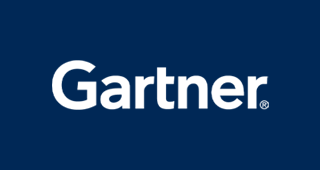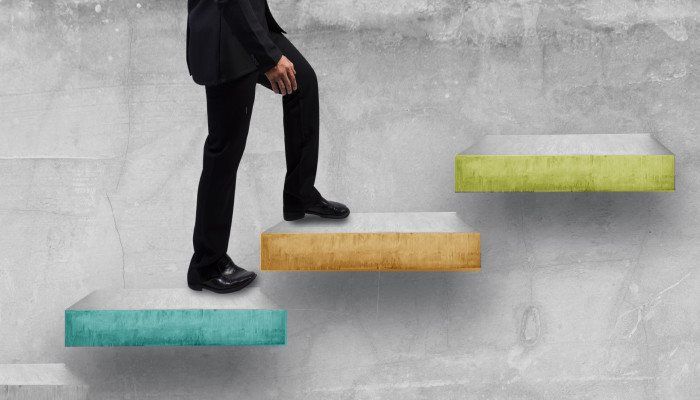What Is The First Step In Lewin's Model Of Planned Change?

Modify behavior—how humans take, encompass, and perform modify—is the core of modernistic change management. ITSM frameworks incorporate various approaches to change management, but one started information technology all: Kurt Lewin's 3 Stage Model of Modify.
Initially a popular concept, current ITSM thinking criticizes Lewin'south model for being too simplistic and abstract to manage modify in a real way. In today'southward speedy, complex, and dynamic mural of enterprise It, the iii-footstep model provides limited actionable guidance.
However, understanding these steps provides an essential view into change management, then let's have a look.
What is the three Stage Model of Modify?
A leader in change management, Kurt Lewin was a German language-American social psychologist in the early 20th century. Among the showtime to research group dynamics and organizational evolution, Lewin developed the 3 Stage Model of Change in lodge to evaluate 2 areas:
- The change process in organizational environments
- How the status-quo could be challenged to realize constructive changes
Lewin proposed that the behavior of whatever individual in response to a proposed alter is a part of grouping beliefs. Any interaction or force affecting the grouping construction also affects the individual'south behavior and capacity to change. Therefore, the grouping environment, or 'field', must be considered in the change process.
The 3 Stage Model of Change describes status-quo as the nowadays situation, merely a change process—a proposed alter—should so evolve into a future desired state. To understand group behavior, and hence the behavior of private grouping members during the modify process, we must evaluate the totality and complication of the field. This is as well known equally Field Theory, which is widely used to develop change models including Lewin's 3 Stage Model.
The 3 Stages of Change
Let's look at how Lewin's 3-step model describes the nature of change, its implementation, and common challenges:
Footstep ane: Unfreeze
Lewin identifies human behavior, with respect to change, every bit a quasi-stationary equilibrium state. This land is a mindset, a mental and physical capacity that can be most absolutely reached, only it is initially situated and then that the mind can evolve without actually attaining that capacity. For instance, a contagious disease tin can spread chop-chop in a population and resist initial measures to contain the escalation. Somewhen, through medical advancement, the affliction can be treated and virtually disappear from the population.
Lewin argues that change follows similar resistance, but group forces (the field) prevent individuals from embracing this change. Therefore, we must agitate the equilibrium country in order to instigate a beliefs that is open to change. Lewin suggests that an emotional stir-upwardly may disturb the group dynamics and forces associated with self-righteousness among the individual group members. Certainly, there are a variety of means to shake up the present condition-quo, and you'll want to consider whether you lot need alter in an individual or, every bit in a visitor, amongst a group of people.
Let'south consider the process of preparing a meal. The first alter, before anything else can happen, is to "unfreeze" foods—preparing them for modify, whether they're frozen and require thawing, or raw food requiring washing. Lewin'due south three Step Model believes that human alter follows a similar philosophy, so yous must starting time unfreeze the status-quo before yous may implement organizational alter.
Though not formally role of Lewin'south model, deportment within this Unfreeze stage may include:
- Determining what needs to change.
- Survey your company.
- Understand why change is necessary.
- Ensuring support from management and the C-suite.
- Talk with stakeholders to obtain support.
- Frame your issue equally one that positively impacts the unabridged visitor.
- Creating the need for modify.
- Market place a compelling bulletin about why change is best.
- Communicate the change using your long-term vision.
Pace 2: Change
Once you've "unfrozen" the condition quo, you lot may begin to implement your change. Organizational change in detail is notoriously complex, so executing a well-planned change process does not guarantee anticipated results. Therefore, you must gear up a variety of modify options, from the planned change procedure to trial-and-mistake. With each attempt at change, examine what worked, what didn't, what parts were resistant, etc.
During this evaluation procedure, there are two important drivers of successful and long-term effectiveness of the modify implementation process: information menses and leadership.
- Information catamenia refers to sharing information beyond multiple levels of the organizational hierarchy, making bachelor a diversity of skills and expertise, and analogous problem solving across the company.
- Leadership is defined equally the influence of certain individuals in the group to reach common goals. A well-planned modify process requires defining a vision and motivation.
The iterative approach is also necessary to sustain a change. According to Lewin, a alter left without adequate reinforcement may exist short-lived and therefore fail to meet the objectives of a change process.
During the Change phase, companies should:
- Communicate widely and clearly about the planned implementation, benefits, and who is affected. Answer questions, clarify misunderstandings, and dispel rumors.
- Promote and empower activity. Encourage employees to get involved proactively with the change, and support managers in providing daily and weekly direction to staff.
- Involve others as much equally possible. These easy wins can accrue into larger wins, and working with more than people tin help you navigate various stakeholders.
Step iii: Refreeze
The purpose of the final step—refreezing—is to sustain the change you've enacted. The goal is for the people involved to consider this new state equally the new status-quo, then they no longer resist forces that are trying to implement the modify. The group norms, activities, strategies, and processes are transformed per the new state.
Without appropriate steps that sustain and reinforce the modify, the previously dominant behavior tends to reassert itself. You lot'll need to consider both formal and informal mechanisms to implement and freeze these new changes. Consider one or more steps or actions that can be strong enough to counter the cumulative event of all resistive forces to the change—these stronger steps aid ensure the new change volition prevail and become "the new normal".
In the Refreeze phase, companies should do the following:
- Tie the new changes into the culture by identifying modify supports and change barriers.
- Develop and promote ways to sustain the alter long-term. Consider:
- Ensuring leadership and direction support and adapting organizational structure when necessary.
- Establishing feedback processes.
- Creating a rewards system.
- Offer training, back up, and advice for both the brusk- and long-term. Promote both formal and informal methods, and call up the diverse means that employees larn.
- Celebrate success!
Lewin's 3 Stage Model of Alter provides an intuitive and central understanding of how changes occur, in context of the social behaviors observed at an private and collective level inside a grouping. Since the theory was commencement introduced in 1951, modify management has taken both supportive and opposing directions. This is a vital reminder: when modernistic-day alter management frameworks are not working for specific use cases and business needs, consider these fundamentals of understanding social behavior in light of change.
Additional resources
- BMC Business organization of IT Weblog
- It Leadership & Best Practices, a multi-part Guide
- What Is Goodhart's Law? Balancing Measurement & Authenticity
- The 4th Industrial Revolution Explained
- Business vs It vs Digital Transformation: Strategy Across three Critical Domains
Access the 2021 Gartner® Magic Quadrant™ for ITSM
The Gartner Magic Quadrant for ITSM is the gold-standard resources helping you understand the strengths of major ITSM software vendors, insights into platform capabilities, integration opportunities, and many other factors to determine which solution best fits your needs.

These postings are my ain and exercise not necessarily represent BMC'due south position, strategies, or opinion.
Run across an error or take a suggestion? Please let usa know by emailing blogs@bmc.com.
BMC Brings the A-Game
BMC works with 86% of the Forbes Global 50 and customers and partners around the world to create their future. With our history of innovation, industry-leading automation, operations, and service direction solutions, combined with unmatched flexibility, we aid organizations complimentary up time and space to become an Autonomous Digital Enterprise that conquers the opportunities alee.
Acquire more almost BMC ›
Source: https://www.bmc.com/blogs/lewin-three-stage-model-change/
Posted by: sargentthoreeduck.blogspot.com


0 Response to "What Is The First Step In Lewin's Model Of Planned Change?"
Post a Comment